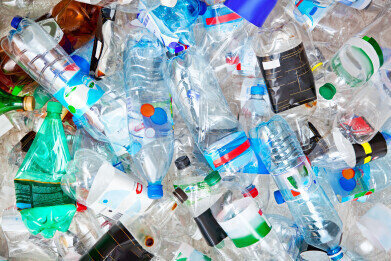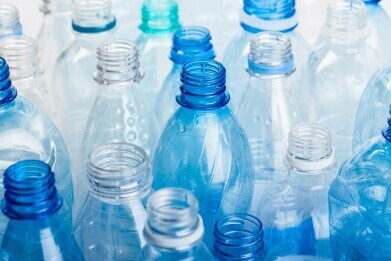Fuel for thought
Could new plastics make recycling feasible?
May 25 2024
A number of experts remain opposed to plastic recycling - but not because they oppose recycling or circularity as principles. Instead, their concern is that our economies produce far too many, far too toxic and far too diverse plastics, problems which are invincible to (or even exacerbated by) recycling. There are solutions to these problems, but some of them, like a radical reduction in volumes, are understandably unpalatable to those who make their livings in plastics. However, following simple principles of detoxification and simplification, might it be possible to conceive of a plastics sector that can become circular?
Prospects for depolymerization
Although chemical recycling suffers from all of the usual difficulties of plastic recyling, research does indicate that some plastics can be depolymerized and recycled as fresh feedstocks using solvolysis.1 Polymers like polymethyl methacrylate (PMMA), PTFE, and polyoxymethylene (POM) can fully depolymerize into their initial monomers. Additionally, polymers such as PS, polyesters (e.g., PET and polycarbonate), nylons, and polyurethanes can partially depolymerize into their monomers. This capability suggests a pathway for more effective recycling of these materials.
Simplifying plastic additives
To improve recycling processes, it is crucial to simplify the additives used in plastic production. Funded by the Norwegian Research Council and run by a group of Norwegian and Swiss research organisations, the PlastChem project sifted through most of the chemicals used in plastics production to identify hazards, identifying 16,000 unique substances with some 4,200 being hazardous. Such a complex mass of chemicals not only renders regulation ineffective, it makes sorting plastics for recycling even harder – and exposing workers and residents of areas around recycling plants to a cocktail of unknown and unmanageable toxins.
The project’s related report, however, included some potential solutions to much of the plastics sector’s toxicity issues.2 Since many chemicals used in plastics are redundant variations on generic additives serving a limited set of basic functions, like plasticization, stabilization, and coloration, it would be possible to mandate the use of a limited set of non-toxic chemicals for all of these functions, complete with effective labelling that enables recycling efforts.
Finding (and mandating) non-toxic additives
Plasticizers: Citrate esters, adipates, succinates
Stabilizers: Calcium-zinc stabilizers, HALS, natural antioxidants
Colorants: Natural and mineral pigments
Flame retardants: Phosphorus-based and mineral-based flame retardants
Impact modifiers: Acrylic impact modifiers, natural rubber
Antistatic and antimicrobial agents: Plant-based glycerol esters, silver nanoparticles, chitosan
Foaming agents: Hydrocerol, water-based foaming
Processing aids: Natural lubricants, non-toxic fillers, silicone-based release agents
Limiting the diversity of plastics
Not only the additives, but the generic types of plastics that they’re used to create must be limited to a more manageable range. Actually, something like this approach has already been trialed for specific plastics in both South Korea and Japan.
In 1992, under pressure from various Ministers, various packaging manufacturers dealing in PET#1 drew up the Industry Voluntary Design Guidelines, a set of non-mandatory regulations that restrict the way in which PET#1 is produced in order to make it easier to recycle. Today, these guidelines ask that the body of all plastic bottles are made only of colourless PET, that there is no direct printing on their surfaces (excepting Best Befores, production sites, and other necessary codes), bans all uses of PVC (when heated, it can form toxins like dioxins and furans) and that labels are easily removeable without adhesive residues. The result? Just behind Germany, Japan ranks second on the Back to Blue Initiative's global plastic management index (PMI) and according to Packaging Gateway, manages to collect 93% of PET#1 bottles, with 85.5% of all PET#1 bottles getting recycled! In 2020, South Korea caught on, formally banning coloured PET#1 in a bid to increase the plastic’s recyclability.
Without a strategy that prevents plastic from entering an economy that doesn’t have the means to recycle it, plastic pollution will continue to increase. When plastic recycling fails, it fails either because we don’t have the means to recycle the material, we can’t sort the material effectively enough so that we end up with unrecyclable mixes or cross-contamination, or because recycling can preserve and exacerbate toxins in the plastic. In the medium-term, it will remain necessary to ban single-use and unnecessary plastics, keeping plastic waste to a minimum in the absence of effective recycling technologies. But by aligning recycling capabilities with regulations on outputs, transitioning to generic and non-toxic additives, and exploring possibilities in depolymerisation, a sustainable double of our plastic-mad economies comes into view.
1 An overview of chemical additives present in plastics: Migration, release, fate and environmental impact during their use, disposal and recycling. Hahladakis et al. Journal of Hazardous Materials. 2018.
2 State of the Science on Plastic Chemicals: Identifying and addressing chemicals and polymers of concern. Wagner et al. The PlastChem Project. 2024. pp 85.
Digital Edition
PIN 26.1 Feb/Mar 2025
March 2025
Analytical Instrumentation - Elemental Analysis for Quality and Process Control at Refineries, for Lubricants and Wear Metals in Engine Oils - Synthetic Lubricants: New Developments - Scaling...
View all digital editions
Events
Apr 22 2025 Hammamet, Tunisia
Apr 22 2025 Kintex, South Korea
Solar & Energy Storage Summit 2025
Apr 23 2025 Denver, CO, USA
Apr 27 2025 Portland, OR, USA
Apr 29 2025 Mumbai, India




















